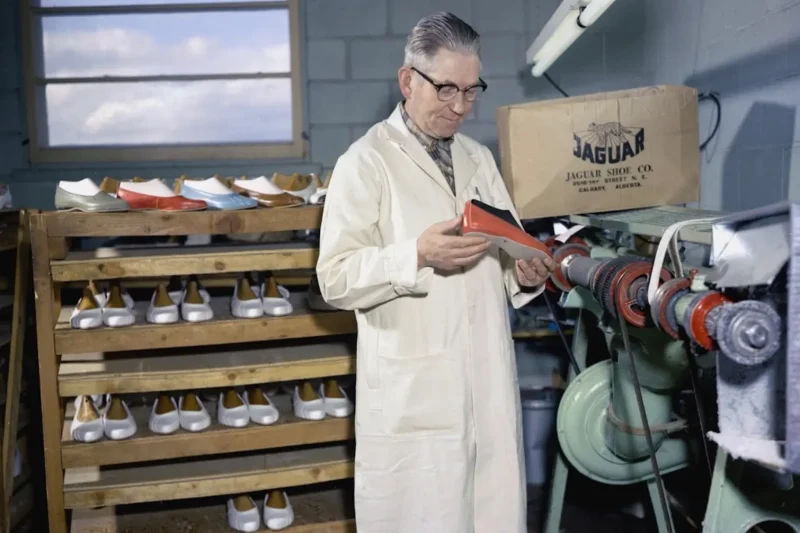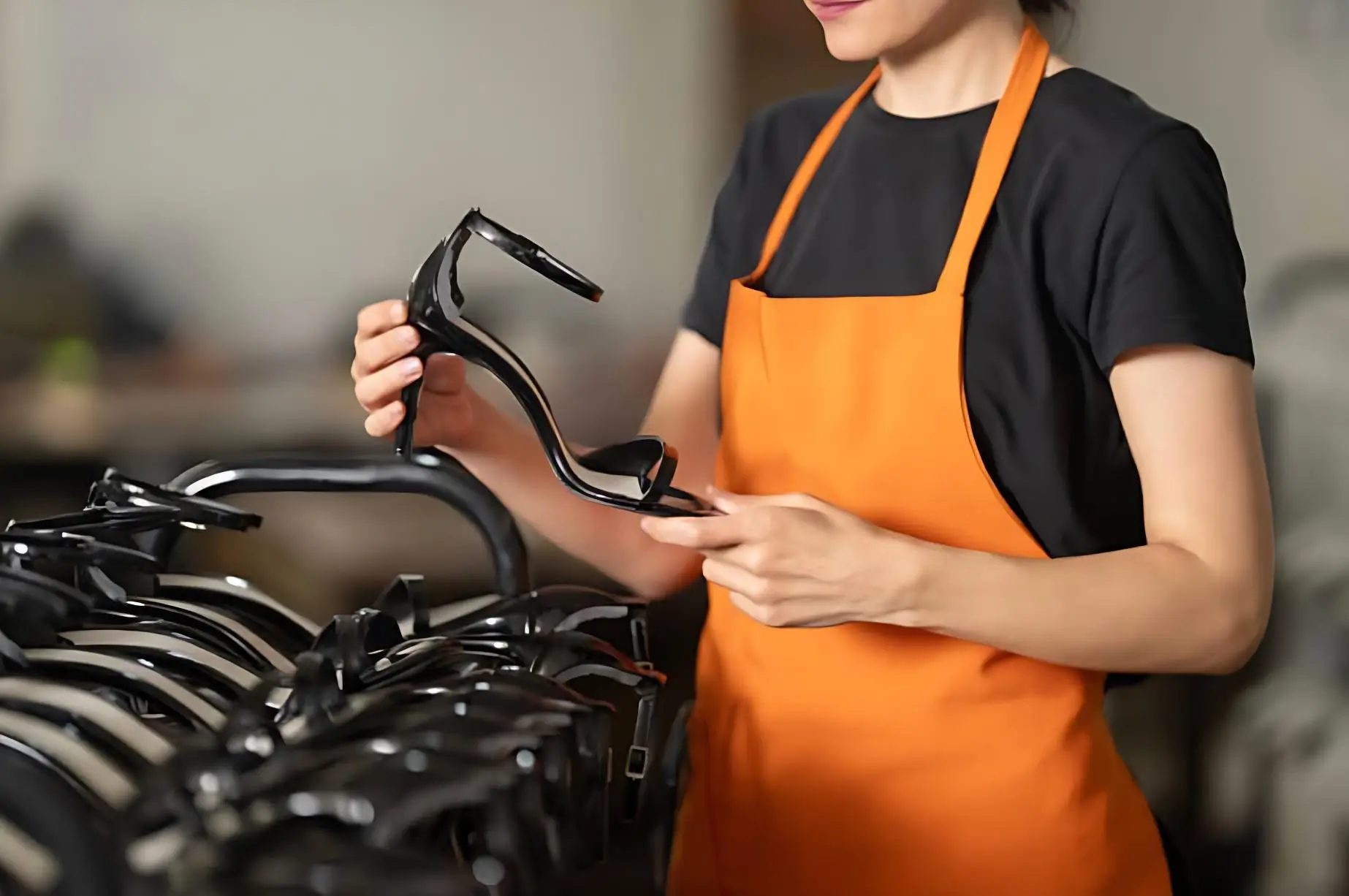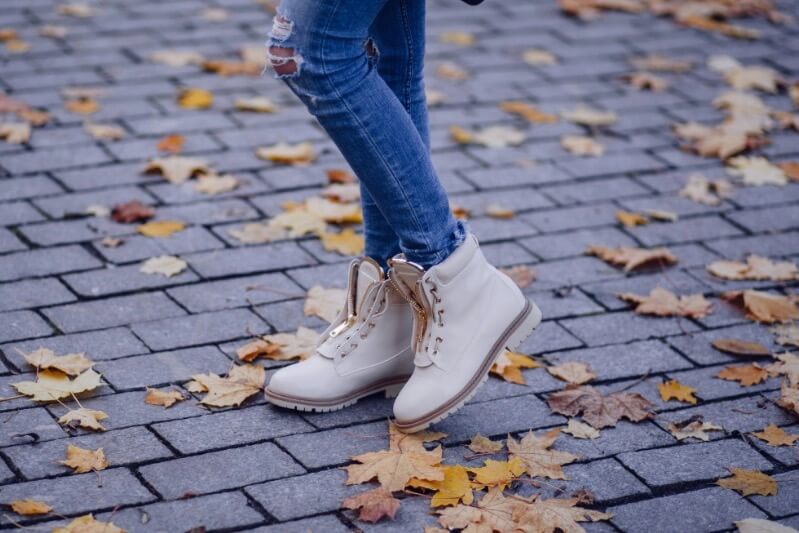Choosing the right OEM manufacturer or shoe factory China can make or break your product launch. This short guide gives straight‑to‑the‑point answers to the ten questions buyers use to shortlist partners — covering lead times, MOQs, customization, quality assurance and landed cost — so you can separate reliable factories from risky leads quickly.
Key Takeaways
Plan lead times with realistic buffers (samples, PPS and bulk production add weeks).
MOQs are negotiable — expect higher minimums for new tooling, but pilots and mixed runs reduce risk.
Customization ranges from low‑cost logos to costly bespoke lasts; tooling drives pricing and timing.
Insist on clear QA: agreed AQL, pre‑shipment checks and documented defect handling.
Compare supplier quotes by total landed cost and Incoterm (FOB, CIF, DDP), not just FOB price.
Why these 10 supplier questions matter when shortlisting an OEM manufacturer
Choosing the right OEM manufacturer — whether a local partner or a shoe factory China — isn’t just about price. Retail buyers need reliability, predictable lead times, clear MOQs, robust quality assurance, and straightforward logistics to protect margin and time-to-market. Industry surveys commonly find more than half of retailers cite supplier unreliability or unpredictable lead times as a top sourcing risk.
What you’ll get from this guide
This post gives concise, actionable answers to the 10 most-asked questions buyers use to build a shortlist and request samples. Think of each answer as a mini-test to separate reliable footwear partners (for high quality shoes, fashionable boots, sustainable footwear) from risky leads.
How to use this introduction (quick checklist)
Lead time predictability
MOQ flexibility and pricing
Customization scope (custom shoe design, branding)
Quality assurance, certifications, defect handling
Logistics, shipping terms and after-sales support
Tip: Keep this checklist when you email samples or compare quotes — it speeds up shortlisting and flags issues before the first order.
What are typical lead times and how should retailers plan orders?
If you source from a shoe factory China or an OEM manufacturer, realistic timelines keep launches on track. Below is a quick guide to typical stages and how to plan to avoid stockouts.
Typical lead-time stages
| Stage | Typical time |
|---|---|
| Sample development | 7–21 days (longer for complex molds/lasts) |
| Pre-production sample (PPS) approval | 3–7 days |
| Bulk production | 30–75 days (volume-dependent) |
| Final inspection + shipping | 7–21 days depending on freight |
How size, complexity & seasonality affect schedules
Larger runs, new lasts or injected components add days or weeks.
Peak seasons (Q3–Q4) create capacity bottlenecks—plan 30–50% extra time.
For an industry view on managing these pressures, see this analysis of lead-time management in footwear manufacturing (mastering lead-time management).
Practical tips & a quick case example
Stagger launches and lock order windows early; request a supplier production calendar with milestones.
Use rolling production—start with urgent SKUs so inventory hits shelves sooner.
Case example: splitting an order into two batches (core colors first, remainder later) cut time-to-shelf by ~3 weeks while keeping extra freight minimal.
Ways to shorten timelines
Accept existing lasts/styles, approve digital tech packs quickly, consolidate colors.
Prioritize SKUs, pay for expedited sampling or air shipments when necessary.
Minimum order quantities (MOQs): what’s negotiable and what affects price?
MOQ (minimum order quantity) is the smallest number of pairs a factory will produce per style/color so the run is commercially viable given setup, materials and labor. For footwear wholesalers, OEM manufacturers and an ODM manufacturer or shoe factory China, typical MOQs vary widely — expect ~300–1,000 pairs for fully custom styles, but lower for standard lasts.
What sets MOQ (quick checklist)
Tooling & last costs: new lasts or molds can add hundreds to thousands in fixed cost, pushing MOQ up.
Material order minimums: leather, knit yards or eco-friendly components often require bulk buys.
Production efficiency & finishing: complex trims, hand-finishing or packaging slow lines and raise unit costs.
What’s negotiable — tactics for small retailers and test runs
Flexible runs: mix-and-match colorways under one style, aggregate SKUs, or accept slightly higher per-unit pricing for smaller lots.
Testing options: request a sample or pilot lot (many factories allow 10–50 pairs for an extra fee) or join consolidated orders with other buyers.
Negotiation levers: promise repeat orders, accept longer lead times, offer favorable payment terms or share peak-season capacity to lower MOQ.
Tip: lower MOQ usually means higher unit price — always run landed-costs and factor in quality assurance for high quality shoes or fashionable boots before committing.
For practical negotiation strategies and examples of trade-offs, this industry guide on negotiating MOQs offers useful tactics and scripts to try with suppliers.
Custom shoe design and branding: how far can you customize a pair?
Want to know what’s realistic — and what will cost extra? Below’s a clear guide to scope, workflow, tooling and expectations so your custom shoe design project delivers high quality shoes without surprises.
Custom shoe design: what OEM manufacturers, ODMs and a shoe factory China can deliver
Common options: colorways, fabric choices, printed text, embroidered or heat-applied logos, sole tread patterns, stitched trims and small last tweaks.
Higher-cost items: new molded logos, branded metal fittings or fully bespoke lasts — these need tooling and longer lead times.
Design → sample → production: practical workflow
Brief: goals, target price, sustainable footwear or materials preferences.
Tech pack: materials, constructions, tolerances, and sizing notes (see our Size Guide).
Prototype / PPS: pre-production sample for fit and finish → revisions → bulk sign-off.
Clear tech packs reduce rework and defects — improving quality assurance.
Tooling, artwork and minimums
Submit vector artwork, Pantone colors and exact placement specs. Expect one-time tooling/setup fees for molds or engraved fittings; embroidered/printed logos often fit low MOQs, while molded logos and bespoke lasts require higher minimums and setup costs.
| Branding type | Typical MOQ | Notes |
|---|---|---|
| Printed/embroidered logo | Low | Quick, low setup |
| Engraved/molded logo | Medium–High | Tooling fee, longer lead time |
| Bespoke last | High | Costly one-off mold |
Industry reports note rising demand and tech like 3D printing speeding up customization; this can lower prototyping time and costs (custom shoes market outlook).
Quick practical tip
Start by adapting an existing base style from our Product Collection to save time and cost, and always request a paid or free sample to verify look and fit before bulk production.
Quality assurance, defect handling, and certifications every buyer should ask about
When sourcing from a shoe factory China or any chinese manufacturer, clear quality assurance expectations save time, money and brand reputation. Below is a compact guide on QA steps, acceptable defect thresholds (AQL), how factories handle nonconforming goods, and which certifications or test reports to request.
Standard QA steps at a mature factory
Incoming material checks (verify leather/fabrics, trims, adhesives).
Inline inspections by station — workmanship checks at each assembly stage.
AQL spot checks during assembly and at random intervals (AQL explained).
Full box-count pre-shipment inspection and final QC sign-off before dispatch.
Understand AQL and acceptable defect rates
AQL (Acceptable Quality Level) is the industry standard for sample-based acceptance. Typical AQLs for footwear range from 0.65 (very strict) to 2.5 (standard retail tolerance). See the table below for quick reference.
| AQL | Typical use |
|---|---|
| 0.65 | Premium/high-risk products — minimal cosmetic defects |
| 1.0 | High-quality shoes, designer or limited runs |
| 2.5 | Mass-market footwear with standard tolerance |
Handling defective goods — what to contract
Documented claims process: require photo evidence, sample returns and a timeline for response.
Root-cause analysis: supplier should state cause and corrective actions.
Resolution options: rework, replacement, or credit — specify deadlines and cost responsibility.
Tip: Insist on a written defect-handling SLA in your purchase contract.
Certifications and test reports to request
Factory-level: BSCI or equivalent social compliance audit.
Product-level: CE where applicable, plus material tests (lead/chrome-free, flammability, sensory reports).
Third-party lab reports for components you care about (e.g., soles, dyes).
To reduce defects up front: provide detailed specs, approve a pre-production PPS sample, lock materials, and run a pre-shipment random check or third-party inspection for large orders. A retailer that added a pre-shipment AQL check saw returns fall by ~40% compared with prior orders that skipped inspection.
Want answers suppliers can’t dodge? Request recent pre-shipment inspection reports, copies of certifications, and the factory’s documented claims procedure — learn more in our FAQ or read real experiences in Customer Testimonials.
Logistics, shipping terms and total landed cost: what to expect when importing footwear
Working with a shoe factory China or a Footwear wholesaler? Expect questions about who pays for what, transit time, packaging and the full landed cost. Below is a practical primer so you can compare supplier offers accurately.
Incoterms made simple: FOB, CIF, DDP
FOB (Free On Board) – supplier delivers to the export port and clears export. Buyer pays ocean/air freight, insurance, import clearance and duties. Good if you use your own freight forwarder.
CIF (Cost, Insurance, Freight) – supplier pays freight and minimum insurance to your destination port; buyer handles import clearance and duties. Useful if you want simpler origin handling.
DDP (Delivered Duty Paid) – supplier bears almost all cost and risk to your door, including duties. Convenient but usually pricier and limits your control over carriers.
For a clear, up-to-date chart of Incoterms and responsibilities, see the practical guide on Freightos, which many buyers use to verify quotes.
Sea vs air, and packaging choices
Sea freight: cost-effective for FCL/LCL — typical door-to-door 20–45 days including port times.
Air freight: faster (often 3–10 days) but substantially more expensive — use for high-value or urgent SKUs.
Packaging: ask about carton sizes, pairs per box, palletization and custom retail boxes. Good packaging cuts damage claims and improves shelf appeal.
Estimate total landed cost (quick formula)
| Component | Tip |
|---|---|
| FOB factory price | Base unit cost from the supplier |
| Freight & insurance | Get recent quotes from the supplier or a freight forwarder |
| Customs duty & VAT | Classify HS code early to estimate duty rate |
| Inland transport & handling | Include port fees, drayage and local delivery |
| Total landed cost | Sum of the above — use this to compare offers |
Always request export documents (commercial invoice, packing list, certificate of origin) from your supplier to avoid clearance delays. For typical timelines and return logistics from Jinhua, check the Shipping and Returns Policy.
Why partner with JINHUA — a 20-year OEM partner (Brand integration)
Considering an OEM manufacturer or ODM manufacturer? JINHUA offers a single-source option from a shoe factory China with 20+ years’ experience producing canvas shoes, sneakers and fashionable boots — useful for retailers wanting varied styles without multiple suppliers.
Brand integration: core strengths
Brand integration: 20+ years OEM/ODM experience across categories (canvas, sneakers, boots).
Brand integration: Strict quality assurance, certifications such as BSCI, and sample/free-sample options to verify high quality shoes before bulk orders.
Brand integration: Flexible MOQs and an R&D team releasing new styles monthly—ideal for testing assortments and scaling winners.
Brand integration: End-to-end services (design, sampling, production) plus logistics support and 24/7 customer care to simplify importing.
Read real buyer experiences on the Customer Testimonials, browse ready designs in the Product Collection, or review shipping options under the Shipping and Returns Policy. For an overview, see JINHUA’s one‑stop solution here.
How to use these answers when shortlisting suppliers — next steps and checklist
Ready to turn research into action? Use this quick checklist and follow-up plan to shortlist reliable partners — focusing on quality assurance and smooth production for your custom shoe design projects.
Shortlist checklist (quick scan)
Confirm lead-time calendar and MOQ flexibility plus pricing tiers.
Ask sample policy, turnaround time and sample costs.
Verify QA/AQL standards, required certifications and inspection process.
Agree shipping terms, estimated total landed cost, and warranty/after-sales procedure.
Prepare before contacting suppliers
Have your tech pack or style references ready — include sizing from our Size Guide for accuracy.
State target volumes, your target FOB/landed price, desired delivery date and any compliance needs.
Check common policy answers in the FAQ so questions are precise and fast to evaluate.
Next steps — sample and pilot
Request a pre-production sample or a small pilot order with documented QA checkpoints. Industry practice shows pilots often cut defects and rework by ~30–40%, letting you compare total landed cost and resolution SLAs before committing to larger runs. Don’t forget to prepare value-adds like a Shoe Care Guide for packaging and customer support.
Frequently Asked Questions
How long will it take from sample to finished shipment?
Typical stages: sample development 7–21 days, PPS 3–7 days, bulk 30–75 days and final inspection + shipping 7–21 days depending on freight. Add 30–50% extra time in peak seasons. Ask suppliers for a production calendar with milestones to lock expectations early.
What MOQs should I expect and can I negotiate smaller runs?
Fully custom styles commonly sit around 300–1,000 pairs, driven by tooling and material minimums. Many factories will do pilot lots (often 10–50 pairs) for a fee, or mixed color runs under one style. To lower MOQ, offer repeat orders, longer lead times, or slightly higher per‑unit pricing.
How much can I customize before costs and lead times spike?
Low‑cost customizations include printed/embroidered logos, colorways and material swaps. High‑cost changes — molded logos, metal fittings or bespoke lasts — require tooling and raise MOQ and lead time. Submit vector artwork and Pantone specs early to avoid delays.
What quality checks and certifications should I require?
Request the factory’s QA workflow, sample AQL (common ranges: 0.65 premium, 1.0 high quality, 2.5 mass market), recent pre‑shipment inspection reports, and factory audits like BSCI. For safety or material concerns, ask for third‑party lab tests on soles, dyes or restricted substances.
Which Incoterm should I pick: FOB, CIF or DDP?
It depends on control and convenience. Choose FOB if you use your own forwarder and want carrier control; CIF if you want the supplier to arrange freight to port; DDP for door‑to‑door simplicity (usually pricier). Compare total landed cost, not just the quote, and confirm required export documents in writing — see a practical Incoterms primer at Freightos.
Conclusion: It’s Not Just Cost, It’s Value
As we’ve broken down, the true cost of manufacturing an athletic shoe is a complex equation of materials, labor, logistics, and strategic investments. But the most successful brands know that the ultimate goal isn’t just to find the lowest price; it’s to achieve the best possible value.
At Jinhua Shoes, this is our entire philosophy. Since 2004, from our home in Wenzhou, China’s shoe capital, we’ve been the trusted OEM & ODM engine behind leading brands across five continents. We are obsessed with the details of the manufacturing process, because we know that every decision—from material sourcing to quality control—has a direct impact on both the final quality and the final cost.
We don’t just give you a price; we give you a transparent cost breakdown and work with you as a partner to optimize it.
If you’re ready to build a world-class product with a partner who understands the art of balancing cost, quality, and innovation, we’re ready to talk.
Got a project in mind? Let’s turn it into reality. Send your project details to our expert team by email to start the conversation.
📧 Email: sales@jinhuashoes.com
(You’ll get personalized expert feedback within 12 hours.)




